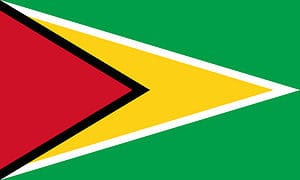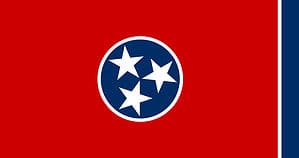Flags can vary widely in their colors and images, but they almost always mean something – whether that is freedom, control, protection, or something else unique to the place or thing that they are representing. The flag of Alaska consists of eight gold stars on a blue background, yet incredibly the design for the flag is the result of a competition for schoolchildren. Read on to learn exactly how it happened, who designed it, and what the flag symbolizes!
Founding and Characteristics of Alaska
Alaska was inhabited by indigenous people for several thousand years before European settlers arrived. Russians were some of the first to arrive in the seventeenth and eighteenth centuries. By 1799 they had control of the area. After a stint as part of Russian America the land was sold to the US in 1867 for $7.2 million and became known as the Department of Alaska. This purchase was unpopular at the time with other officials in the US and deemed to be “folly”. However, the discovery of gold and oil eventually proved the purchase to be worthwhile. Despite this, it wasn’t until January 3, 1959 that Alaska officially became the 49th state of America.
Nicknamed The Last Frontier, Alaska is the largest state of the US and is known for its vast wilderness. It is one of only two non-contiguous states and is instead bordered by Canada’s British Columbia and Yukon. Alaska is also the most northerly state which is something that is acknowledged by its flag. Including its islands, Alaska has 34,000 miles of coastline as well as more than three million lakes. Therefore, it’s not surprising that fishing makes up a large portion of Alaska’s economy.
The climate of Alaska varies depending on the location, with different areas being oceanic, sub-arctic, or Arctic. Alaska also sees extremes in temperatures with the area near Fairbanks achieving both the highest and lowest temperatures in the state. The highest recorded was 100°F and the lowest -60°F .

Alaska is the largest state of the US and is known for its vast wilderness.
©BlueBarronPhoto/Shutterstock.com
History of the Flag of Alaska
Prior to becoming states the territories in the US didn’t typically have flags and up until 1926 this remained true for Alaska. However, in 1926 Alaska’s territorial governor, George Parks, saw the flags of the other official states flying in Washington and decided that Alaska needed a flag too. Instead of the flag being created by an official he arranged for a competition to be held to allow Alaskan children between the grades of seven and twelve to design it.
The competition was opened in January 1927 with each town judging the designs from children in their area and then forwarding the top ten on to the final round. By March there were 142 flag designs for officials to select a winner from.
The winning flag design was created by thirteen year old Benny Benson who lived at an orphanage in Seward. Benny’s winning design consisted of eight gold stars representing the Big Dipper on a simple blue background. The flag was officially adopted in May by the territorial government. It was first flown on July 9, 1927 during a ceremony in Seward. Benny was honored during this ceremony and was given a watch with the flag’s design on it as well as a $1,000 scholarship. This landmark event was particularly important as it was only four years after Native Alaskans received citizenship and the right to vote. As such, Benny was hailed far and wide for his achievements.
Although Alaska now had an official flag it would be a further 32 years until it became a state. However, this flag remained the symbol of Alaska even once it achieved statehood.

The design for the flag of Alaska was created by thirteen year old Benny Benson who lived at an orphanage in Seward as part of a competition.
©iStock.com/rarrarorro
Symbolism of the Flag of Alaska
The flag of Alaska symbolizes a few things. The first is the literal meaning that it represents – the dark blue background depicts the night sky while the eight stars represent those that make up the Big Dipper. Seven of these stars are the same size while the eighth – in the upper right corner – is larger as it represents Polaris which is also known as the North Star or the Pole Star. Benny Benson chose this design as it was the constellation that he always looked for every night.
However, Benny himself wrote an explanation with his design:
“The blue field is for the Alaska sky and the forget-me-not, an Alaskan flower. The North Star is for the future of the state of Alaska, the most northerly in the Union. The Dipper is for the Great Bear – symbolizing strength.”
Based on this description we can then take a closer look at what it symbolizes. The Big Dipper is an asterism that can often be seen in the Alaskan sky, while the North Star represents Alaska’s northerly location.
The Big Dipper itself is part of the Ursa Major constellation. The Latin name of Ursa Major translates into “greater bear” which is why the constellation is typically known simply as the Great Bear. This is in contrast to the nearby Ursa Minor which translates into “lesser bear”. Bears – particularly large ones – are extremely strong which in this case alludes to the strength of Alaska.

The flag of Alaska displays eight stars to represent the Big Dipper and the North Star.
©iStock.com/Oleksii Liskonih
Alaska’s Flag (Song)
Incredibly, the story of Alaska’s flag doesn’t end there as there is even a song about it – the state song of Alaska – named Alaska’s Flag. In 1935 the state’s commissioner of education wanted something to help children learn about the flag. The idea was born that it should be a song that children could easily understand and remember it.
Marie Drake, the assistant commissioner was tasked with the job. She was inspired by the story of how Benny Benson had created the design. She initially wrote a poem about the flag and what it symbolized to Alaska. It begins with the line “Eight stars of gold on a field of blue” and then goes on to mention the Big Dipper and the North Star which shines bright above the state. It also mentions the goldrush as a nod to Alaska’s earlier history.
Although at this point “Alaska’s Flag” was a poem it was still intended to become a song. So now Elinor Dusenbury stepped forward. She had lived in Alaska but left to move to a new home in Nebraska, upon which she wrote the music to accompany the poem because she was homesick. “Alaska’s Flag” was adopted as the official state song on February 23, 1955.
Click here to learn about every single flag in the world!
Up Next
- Discover the 8 Largest Animals in Alaska, and Where You’ll Find Them
- Do Polar Bears Live in Alaska?
- Sea Monsters! The 10 Biggest Trophy Fish Ever Caught in Alaska
The photo featured at the top of this post is © iStock.com/Kamlesh Suthar
Sources
- Britannica (1970) "https://www.britannica.com/topic/flag-of-Alaska
- University of Alaska, Available here: https://www.alaska.edu/uajourney/history-and-trivia/Alaska%20State%20Flag%20and%20Song
- University of Alaska, Available here: https://www.alaska.edu/uajourney/history-and-trivia/Alaska%20State%20Flag%20and%20Song/part-2
- University of Alaska, Available here: https://www.alaska.edu/uajourney/history-and-trivia/Alaska%20State%20Flag%20and%20Song/part-3
Thank you for reading! Have some feedback for us? Contact the AZ Animals editorial team.






